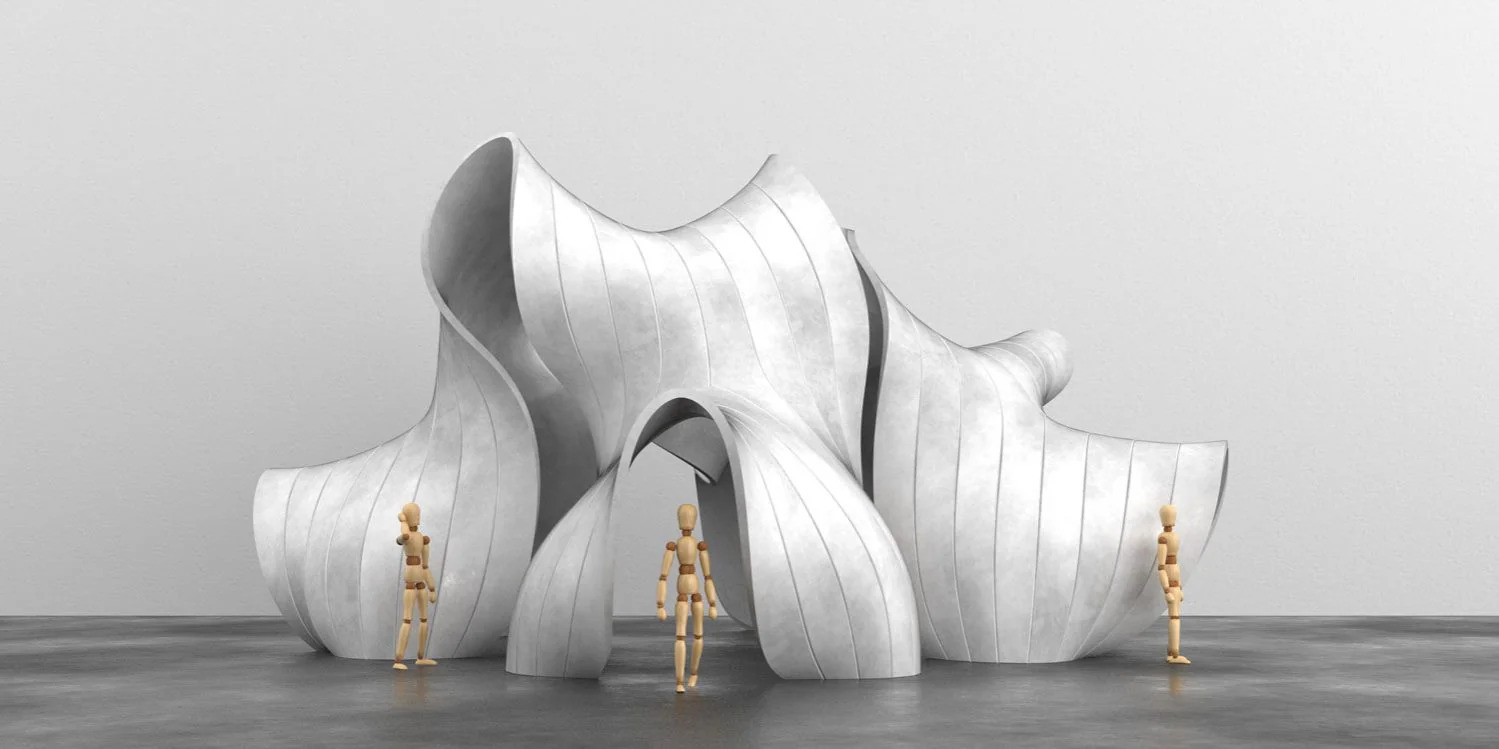We’re excited to offer a limited-time bundle featuring all 17 versions of the Computational Design: NEXT conference at an incredible 50% discount!

We’re excited to offer a limited-time bundle of all 17 versions of the Computational Design: NEXT conference at an incredible 50% discount! This exclusive package brings together cutting-edge insights and innovative ideas from computational design and architecture leaders. Whether you’re a professional or a student, this is your chance to dive deep into the future of architecture, parametric design, and emerging technologies.
Speakers include top experts like Arthur Mamou-Mani, known for his eco-parametric designs, Refik Anadol, a visionary in AI and digital architecture, and Melodie Yashar, a leader in space architecture. Other prominent voices like Neil Leach, a pioneer in AI for architecture, and Jesper Wallgren, founder of Parametric Solutions, provide invaluable insights into the latest advancements.
With hundreds of hours of tutorials, case studies, and talks, this bundle is perfect for expanding your knowledge and mastering tools like Rhino, Grasshopper, and AI-driven design. Don’t miss this chance to access the entire conference series at half the price—grab the bundle today!
4 Followers
0 Following
1 Followers
0 Following
2 Followers
0 Following
0 Followers
0 Following
0 Followers
0 Following
0 Followers
0 Following
0 Followers
0 Following
0 Followers
0 Following
0 Followers
0 Following
1 Followers
0 Following
0 Followers
0 Following
0 Followers
0 Following
11 Followers
12 Following
4 Followers
0 Following
10 Followers
0 Following
1 Followers
0 Following
2 Followers
0 Following
1 Followers
0 Following
0 Followers
0 Following
0 Followers
0 Following
0 Followers
0 Following
0 Followers
0 Following
0 Followers
0 Following
0 Followers
0 Following
0 Followers
0 Following
7 Followers
0 Following
6 Followers
0 Following
0 Followers
0 Following
0 Followers
0 Following
0 Followers
0 Following
0 Followers
0 Following
0 Followers
0 Following
0 Followers
0 Following
0 Followers
0 Following
0 Followers
0 Following
0 Followers
0 Following
0 Followers
0 Following
0 Followers
0 Following
2 Followers
0 Following
0 Followers
0 Following
0 Followers
0 Following
0 Followers
0 Following
0 Followers
0 Following
1 Followers
0 Following
0 Followers
0 Following
0 Followers
0 Following
0 Followers
0 Following
1 Followers
0 Following
1 Followers
0 Following
1 Followers
0 Following
0 Followers
0 Following
0 Followers
0 Following
0 Followers
0 Following
0 Followers
0 Following
0 Followers
0 Following
2 Followers
0 Following
0 Followers
0 Following
0 Followers
0 Following
0 Followers
0 Following
1 Followers
0 Following
3 Followers
0 Following
1 Followers
0 Following
0 Followers
0 Following
0 Followers
0 Following
2 Followers
0 Following
1 Followers
0 Following
0 Followers
0 Following
5 Followers
0 Following
0 Followers
0 Following
0 Followers
0 Following
0 Followers
0 Following
0 Followers
0 Following
0 Followers
0 Following
0 Followers
0 Following
19 Followers
0 Following
3 Followers
0 Following
1 Followers
0 Following
0 Followers
0 Following
0 Followers
0 Following
0 Followers
0 Following
0 Followers
0 Following
0 Followers
0 Following
0 Followers
0 Following
0 Followers
0 Following
1 Followers
0 Following
0 Followers
0 Following
0 Followers
0 Following
0 Followers
0 Following
0 Followers
0 Following
0 Followers
0 Following
0 Followers
0 Following
0 Followers
0 Following
0 Followers
0 Following
0 Followers
0 Following
0 Followers
0 Following
0 Followers
0 Following
0 Followers
0 Following
0 Followers
0 Following
0 Followers
0 Following
1 Followers
0 Following
0 Followers
0 Following
0 Followers
0 Following
0 Followers
0 Following
0 Followers
0 Following
1 Followers
0 Following
0 Followers
0 Following
0 Followers
0 Following
0 Followers
0 Following
3 Followers
0 Following
0 Followers
0 Following
1 Followers
0 Following
0 Followers
0 Following
0 Followers
0 Following
0 Followers
0 Following
0 Followers
0 Following
0 Followers
0 Following
0 Followers
0 Following
0 Followers
0 Following
0 Followers
0 Following
41 Followers
0 Following
1 Followers
0 Following
1 Followers
0 Following
1 Followers
0 Following
2 Followers
0 Following
1 Followers
0 Following
1 Followers
0 Following
3 Followers
0 Following
1 Followers
0 Following
1 Followers
0 Following
0 Followers
0 Following
0 Followers
0 Following
0 Followers
0 Following
0 Followers
0 Following
0 Followers
0 Following
0 Followers
0 Following
0 Followers
0 Following
0 Followers
0 Following
0 Followers
0 Following
6 Followers
0 Following
0 Followers
0 Following
3 Followers
0 Following
0 Followers
0 Following
0 Followers
0 Following
10 Followers
0 Following
1 Followers
0 Following
0 Followers
0 Following
0 Followers
0 Following
4 Followers
0 Following
0 Followers
0 Following
1 Followers
0 Following
0 Followers
0 Following
0 Followers
0 Following
0 Followers
0 Following
0 Followers
0 Following
0 Followers
0 Following
1 Followers
0 Following
5 Followers
0 Following
7 Followers
0 Following
0 Followers
0 Following
0 Followers
0 Following
3 Followers
0 Following
0 Followers
0 Following
8 Followers
0 Following
36 Followers
0 Following
0 Followers
0 Following
0 Followers
0 Following
0 Followers
0 Following
0 Followers
0 Following
7 Followers
0 Following
0 Followers
0 Following
0 Followers
0 Following
5 Followers
0 Following
0 Followers
0 Following
0 Followers
0 Following
1 Followers
0 Following
6 Followers
0 Following
1 Followers
0 Following
2 Followers
0 Following
2 Followers
0 Following
2 Followers
0 Following
1 Followers
0 Following
1 Followers
0 Following
1 Followers
0 Following
2 Followers
0 Following
1 Followers
0 Following
1 Followers
0 Following
4 Followers
0 Following
No comments found.